 January 4, 2018 John E. Ross, KD8IDJ, Editor
| ||||||||
Thousands Getting Their Grids On! And they're off! New Year's Day January 1 (UTC) marked the opening day for the ARRL International Grid Chase 2018 (IGC). Among those hitting their grids running was newly minted General-class operator Katie Thompsen, KI7HCX, of Mt. Vernon, Washington, who used the occasion to embark on the Chase and to get on HF for the first time using her own call sign. The 11-year-old comes from a ham radio family. Her dad, Todd, is W7TAO, while her older brothers are Mason, K7MWT, 15 -- who upgraded to Amateur Extra at the examination session where his sister upgraded to General -- and Tanner, K7TMT, 13.
"She called CQ Grid Square Chase on 20 meters and very quickly made 44 contacts," her dad told ARRL. "She was very excited to work her first pileup and even had two Japanese stations QSO with her. She's anxious to continue participating in the grid square chase." Todd Thompsen said all three young radio amateurs are looking forward to participating in Rookie Roundup in April. The IGC is off to a rousing start, with some 6,400 participants from around the globe already showing up on the Leader Board as of the morning of January 4. Point totals for the International Grid Chase are shown for confirmed contacts only, and, while the leader boards are not based on real-time data, they are updated several times a day. All contacts on all bands except 60 meters are valid for Grid Chase credit, provided both stations upload their logs to Logbook of The World (LoTW) and get a match. The objective of the year-long event is to work stations in as many different Maidenhead grid squares as possible, and then upload your logs to LoTW.
Members of the Marconi Cape Cod Radio Club KM1CC at the Cape Cod National Seashore will activate rare grid square FN51 January 18-19 for the International Grid Chase. Complete details of the ARRL International Grid Chase 2018 appeared in the December 2017 issue of QST. For more information, contact the ARRL Contest Branch. ARRL Life Member Receives Patent for "Cloaking" Technology Nathan "Chip" Cohen, W1YW, of Belmont, Massachusetts -- the founder of Fractal Antenna Systems Inc and inventor of the fractal antenna -- has been granted a patent for deflective electromagnetic shielding -- essentially "cloaking" technology to defend against detection by radar and similar technologies. "Ham radio experimentation can lead to some pretty cool innovations!" Cohen said in response to a recent QRZ forum post about the patent. "Let's keep that spirit alive in 2018."
The patent covers electromagnetic cloaking/deflection of, among other things, satellites, rockets, towers, antennas, vehicles, body coverings, ships, spacecraft, and even people. "Much time and effort has been devoted to the quest for so-called invisibility machines," the patent's background information states. "Beyond science fiction, however, there has been little, if any, real progress toward this goal." According to the detailed description, the technology "provides one or more surfaces that act or function as shielding and/or cloaking surfaces for which at least a portion of the surface includes or is composed of 'fractal cells' (small fractal shapes, functioning as antennas or resonators) placed sufficiently close to one another, so that current present in one fractal cell is replicated or reproduced to an extent in an adjacent fractal cell. Without being limited by any theoretical explanation, surface plasmonic waves are believed to cause such replication in conjunction with evanescent waves." The resulting surface would deflect around an object. In terms of backscatter, upon which radar systems depend, Cohen has explained it this way: "The incoming wave reflects off a boundary condition at the object. Its reflection is out of phase and phase-cancels with the incoming wave. Bye-bye, backscatter." Fractal Antenna Systems first publicly demonstrated "person invisibility" in 2012 for a Radio Club of America audience. He also has demonstrated invisibility cloaks at Hamvention® and at the ARRL New England Division Convention. According to the company's BusinessWire release, "Uses of the newly patented technology extend to commercial needs such as towers, antennas, people, and shielding, but it may also be used in defense and intelligence arenas."
The BusinessWire release said the technology "produces the desired effects without any requirements on special orientation, composition, or shape of the object. The cloak/deflector can be very thin, and the effect can happen over a wide bandwidth." The company noted that cloaking applications concentrate on microwave and infrared wavelengths, but the technology and patents also apply to visible light. "Cloaking at visible light has limited needs," Cohen has said. "Camouflage and projection methods are easier and cheaper at making something disappear to the eye. But at radio and heat wavelengths, the cloaking technology is an important enabler." Cohen, 62, applied for the patent in 2012. An ARRL Life Member and active DXer, he has been a radio amateur for more than 50 years. The Doctor Will See You Now! "Keeping Cool -- the importance of maintaining proper equipment temperature" is the topic of the latest (January 4) episode of the "ARRL The Doctor is In" podcast. Listen...and learn!
Every 2 weeks, your host, QST Editor-in-Chief Steve Ford, WB8IMY, and the Doctor himself, Joel Hallas, W1ZR, will discuss a broad range of technical topics. You can also e-mail your questions to doctor@arrl.org, and the Doctor may answer them in a future podcast. Enjoy "ARRL The Doctor is In" on Apple iTunes, or by using your iPhone or iPad podcast app (just search for "ARRL The Doctor is In"). You can also listen online at Blubrry, or at Stitcher (free registration required, or browse the site as a guest) and through the free Stitcher app for iOS, Kindle, or Android devices. If you've never listened to a podcast before, download our beginner's guide. Large Donations Making Bouvet 3Y0Z DXpedition a Reality; Team Eager to Get Under Way The 3Y0Z Bouvet Island DXpedition team announced in late December that it had reached "yet another milestone" in its quest to activate Bouvet Island, the second most-wanted DXCC entity (behind the Democratic Republic of North Korea), in January and February. A dependency of Norway, Bouvet is a subantarctic island in the South Atlantic. This major DXpedition could get under way as early as January 23 or 24, and the crack team of operators hopes to spend 14 to 16 days on Bouvet, depending on weather and other factors. Bouvet has not been activated for about a decade. The DXpedition said it would transfer nearly $500,000 to DAP, the Chilean company that owns and operates the M/V Betanzos and the helicopters that will provide transportation. That single outlay points up the extraordinary expense of mounting a DXpedition such as this.
The 3Y0Z team, which consists of 20 highly experienced radio amateurs, said it's on schedule for a January 13 departure to Bouvet Island, "the most remote island on Earth." Team members will gather in Punta Arenas, Chile, by January 10, attend a day-and-a-half marine safety course, purchase last-minute supplies, and then fly across the Drake Passage to King George Island in the South Shetlands, where they will board the newly refurbished Betanzos for an approximately 10-day voyage to Bouvet. "Sea ice has been reported along a direct route to Bouvet, and that may dictate we take a more northerly course, before turning east to approach Bouvet. That may add day or two to our transit time," the December news release said.
Two helicopters will transport the team and gear to and from Bouvet. "There has been a thorough review of landing procedures and shelter and antenna layouts," the news release said. "We have three alternative anchoring systems to secure the shelters and antennas to the ice on the surface of Bouvet. So, the plan remains unchanged." 3Y0Z anticipates "a propagation-driven operation," with two high-power stations on every open band using gain and directional antennas. Primary modes will be CW, SSB, and RTTY. FT8 will be utilized if it is the only productive mode. The Bouvet team advises FT8 enthusiasts to read the 3Y0Z FT8 protocol on the Band Plan page. The website includes complete information on band plans and frequencies, propagation predictions, and QSL procedures. The 3Y0Z team leaders are Bob Allphin, K4UEE; Ralph Fedor, K0IR, and Erling Wiig, LA6VM. Among them, the Bouvet DXpedition leaders hold 11 DXpedition of the Year awards, have activated a dozen Top 10 DXCC entities. "Creepy and Surreal" Urban Explorers' Video Reveals Largely Unseen Side of Hara Arena Reminiscent of underwater footage from a TV documentary about the discovery of a long-lost vessel, a recently posted YouTube video that takes a deep dive into the innards of former Hamvention® venue Hara Arena has been attracting notice within the Amateur Radio community. The narrated video probe was posted on December 22 by Once Occupied, an urban exploration group that originated in Dayton, Ohio. It's not the first video of the derelict Hara Arena since it closed -- and since anything thought to be of value inside was auctioned off. The IRS put the Hara Arena complex itself on the auction block last August to satisfy a tax lien, but there were no successful bidders.
It's not clear whether the three-person Once Occupied expedition had permission to be inside Hara Arena nor how the individuals, who do not identify themselves, gained entry to the building complex. Among the more fascinating revelations was how much equipment, event paraphernalia, and just plain debris remain inside the 165,000-square foot Hara complex, which included an apartment. "This is creepy and surreal, but I couldn't turn it off and had to watch the whole thing," allowed Pete Varounis, NL7XM, the QCWA's official call sign historian, who shared the video with his colleagues on the QCWA board of directors. "You will recognize entire areas that teemed with activity during every Hamvention," he continued. "It looks like raw footage from Chernobyl after the Russian nuclear disaster."
Much of this particular video covers parts of Hara Arena never seen by Hamventioneers -- including catwalks, tunnels, and behind-the-scenes rooms and facilities such as offices, kitchen areas, and storerooms, some of which still contained unopened goods and supplies. File cabinets still store paper files, and abandoned computer and other equipment is scattered about. At least one box the group encountered contained new T shirts for a sports team that once made its home at Hara Arena. Some areas of the building's interior seem to have been hit by a tornado. The explorers do not appear to take anything from Hara Arena or disturb what remained behind.
Hara Arena's future remains in limbo. An IRS staff member who was involved in the 2017 auction told ARRL that the agency will not put Hara Arena up for auction again but said there is "a lot of interest in the property." She said other lien holders, including a mortgage holder and the Town of Trotwood, eventually could get the opportunity to put the building on auction in an effort to satisfy their liens on the property. Second Annual AM Rally Special Event Set for February 2-4 Weekend The second-annual AM Rally is inviting operators to explore the original phone mode over the February 2-4 weekend. Co-sponsor Clark Burgard, N1BCG, said the event "is intended to be both fun and educational." It encourages all radio amateurs to get on AM, possibly for the first time.
The AM Rally website includes tips and suggestions for various transmitter types as well as links to additional information. Certificates will be awarded for most states contacted and most contacts overall made by stations in five power-output classes. Some "special recognitions" will be made on an ad hoc basis, Burgard said. The AM Rally gets under way at 0000 UTC on Saturday, February 3, and concludes at 0700 UTC on Monday, February 5. Band include 160, 80, 40, 20, 15, 10, and 6 meters. The 2017 AM Rally, which was held in April, was deemed a huge success, with nearly 1,500 contacts reported on the 72 logs submitted. Philippine Radio Amateurs Activate for Weather Emergencies Philippines Amateur Radio Association's (PARA) Ham Emergency Radio Operations (HERO) volunteers assisted with emergency communication support in the wake of two severe weather events. Tropical Storm Kai-tak -- known locally as Urduja -- hit first in the central Philippines on December 16, leaving nearly dozens dead and forcing others to evacuate. It was followed on December 22 by the more-severe Tropical Storm Tembin -- known locally as Vinta -- which caused significant damage and claimed some 200 lives in the southern Philippines. Hundreds more are reported missing.
"Much rain was dumped in the Samar and Tacloban areas of the Central Visayas region," he said. "In situations like this, most radio amateurs in the affected areas fold into the government's regional/provincial disaster risk-reduction management offices to consolidate the actions of the amateur and civic groups as well as the military and police forces." Just two days later, TS Tembin threatened the southern island of Mindanao. HERO reported that it was ready for the storm and able to mobilize the assets of radio amateurs and civic communications group as well as of police and armed forces.
Vicencio reported that the wind strength and volume of rains inundated Mindanao, taking a direct east-to-west path. Residential areas were hit by flooding, and many lost their lives after being trapped indoors by the fast-rising waters. The flooding also took out bridges and roads and devastated farm fields, "There was a shortage of communications too," Vicencio reported. "Many major transportation arteries were affected, further stranding others who tried to escape." This is just the start of the annual adverse weather season in the Philippines. Vicencio said the HERO Network is ready. -- Thanks to Jim Linton, VK3PC, Chair, IARU Region 3 Disaster Communications Committee Alabama Governor Kay Ivey Makes Ham Radio Debut with State's Bicentennial Call Sign Alabama Governor Kay Ivey made her Amateur Radio debut on December 14 -- the state's 198th birthday -- at the same time becoming the first person to use the state's bicentennial call sign, AL2C. Alabama will celebrate its 200th anniversary in 2019, and AL2C will be on the air for 2 years as part of the statewide celebration.
"I'm very excited to see the hard work that has been in the works for some time now to promote Amateur Radio in concert with the Alabama Bicentennial celebration," said ARRL Alabama Section Manager JVann Martin, W4JVM, who was at the State Capitol for the event. "It was great to activate the brand-new call sign AL2C on Alabama's 198th birthday, and we look forward to many more activities to come as we build up to Alabama's 200th birthday." The Alabama Bicentennial Amateur Radio Club set up a D-Star VHF station in the Old House Chamber at the Alabama State Capitol in Montgomery. After announcing the Alabama Bicentennial Schools Initiative, Governor Ivey proceeded to the radio station, initiating contact with the Lee County Emergency Management Agency. The governor discussed the Alabama Bicentennial over the air, with Otto Arnoscht, N4UZZ, the AL2C Call Sign Trustee, serving as the control operator. On the other end of the conversation at Lee County Emergency Management Agency was Mike Watkins, WX4AL, the District Delta ARES Emergency Coordinator and Lee County ARES Emergency Coordinator. Read more. In Brief...
Just Ahead in Radiosport
See the ARRL Contest Calendar for more information. For in-depth reporting on Amateur Radio contesting, subscribe to The ARRL Contest Update via your ARRL member profile e-mail preferences. Upcoming ARRL Section, State, and Division Conventions
Find conventions and hamfests in your area.
. .
Subscribe to...
Free of charge to ARRL members...
Find ARRL on Facebook! Follow us on Twitter, Snapchat @ARRLHQ, and Instagram! | ||||||||
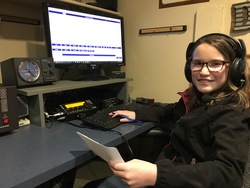
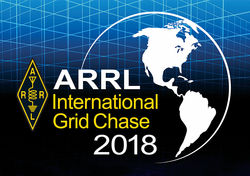 Each new grid square contact confirmed through LoTW will count toward your
Each new grid square contact confirmed through LoTW will count toward your 

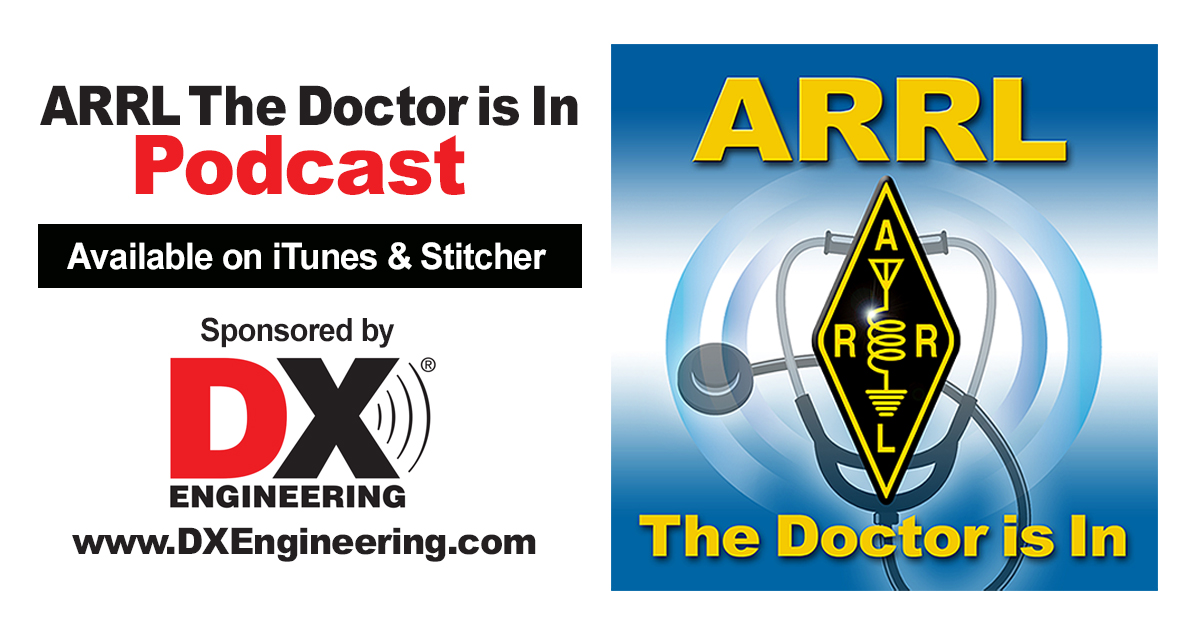 Sponsored by
Sponsored by  In August, the Northern California DX Foundation (
In August, the Northern California DX Foundation (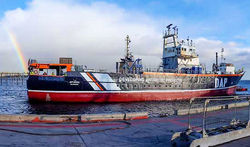
.jpg)
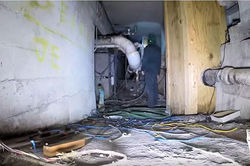 The urban explorers were a bit more mundane. "The facilities include a bar pub, ballroom, conference center, ice rink, and four exhibition halls. This place is huge!" the narrative posted with the more than 20-minute video clip related. As the Once Occupied team noted, Hara Arena over the years played host to sports teams and top entertainers -- including Elton John and the Rolling Stones -- as well as to Hamvention, which relocated to the Greene County Fairgrounds and Expo Center in Xenia last year after Hara closed in 2016.
The urban explorers were a bit more mundane. "The facilities include a bar pub, ballroom, conference center, ice rink, and four exhibition halls. This place is huge!" the narrative posted with the more than 20-minute video clip related. As the Once Occupied team noted, Hara Arena over the years played host to sports teams and top entertainers -- including Elton John and the Rolling Stones -- as well as to Hamvention, which relocated to the Greene County Fairgrounds and Expo Center in Xenia last year after Hara closed in 2016.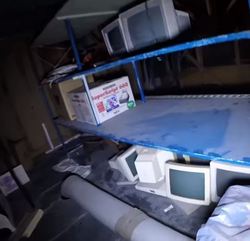 "Our passion is exploring abandoned places. We explore because we love adventure and the thrill of the hunt," Once Occupied says on its
"Our passion is exploring abandoned places. We explore because we love adventure and the thrill of the hunt," Once Occupied says on its 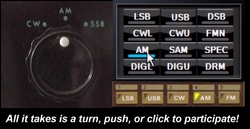 "Because of resurgent interest in AM, the event is also an opportunity for amateurs new to AM to learn about proper settings and get the most performance out of their station, whether it's modern, vintage, tube, transistor, software-defined, military, boat anchor, broadcast, home brewed, or commercially made," Burgard said.
"Because of resurgent interest in AM, the event is also an opportunity for amateurs new to AM to learn about proper settings and get the most performance out of their station, whether it's modern, vintage, tube, transistor, software-defined, military, boat anchor, broadcast, home brewed, or commercially made," Burgard said.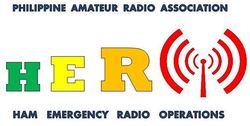 Roberto "JoJo" Vicencio, DU1VHY, said HERO volunteers provided HF coordination through a national emergency net at 7.095 MHz. In addition, local clubs embedded with government responders used designated channels and club frequencies. According to Vicencio, TS Kai-Tak ravaged the Central Visayas area, holding in place for nearly 3 days.
Roberto "JoJo" Vicencio, DU1VHY, said HERO volunteers provided HF coordination through a national emergency net at 7.095 MHz. In addition, local clubs embedded with government responders used designated channels and club frequencies. According to Vicencio, TS Kai-Tak ravaged the Central Visayas area, holding in place for nearly 3 days..jpg)

.jpg) The deadline is January 31, 2018 to submit ARRL Foundation Scholarship applications. All applicants must be FCC-licensed radio amateurs, and many scholarships have other specific requirements, such as intended area of study, ARRL Division, Section or state, and license class. Applicants should review the scholarships and check off the ones for which they are eligible.
The deadline is January 31, 2018 to submit ARRL Foundation Scholarship applications. All applicants must be FCC-licensed radio amateurs, and many scholarships have other specific requirements, such as intended area of study, ARRL Division, Section or state, and license class. Applicants should review the scholarships and check off the ones for which they are eligible. 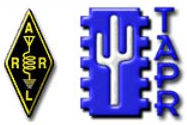 The 37th annual ARRL/TAPR Digital Communications Conference (
The 37th annual ARRL/TAPR Digital Communications Conference (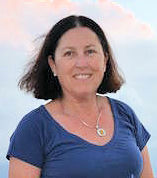 Nancy Yoshida, KG0YL, has been appointed as ARRL North Dakota Section Manager, effective on January 1. Yoshida, an ARRL Life Member who resides in Thompson, took over the North Dakota Field Organization leadership reins from Lynn Nelson, W0ND, elected in November as ARRL Dakota Division Vice Director. Nelson had served as North Dakota Section Manager since 2008. Yoshida, who was North Dakota Section Emergency Coordinator since 2011, will complete Nelson's term of office, which continues through September. Yoshida, 67, has raced sled dogs since 2002, and in 2009 she ran the Iditarod Sled Dog Race in Alaska. She became interested in Amateur Radio after volunteering for Iditarod communications in 2006, and continues to be involved.
Nancy Yoshida, KG0YL, has been appointed as ARRL North Dakota Section Manager, effective on January 1. Yoshida, an ARRL Life Member who resides in Thompson, took over the North Dakota Field Organization leadership reins from Lynn Nelson, W0ND, elected in November as ARRL Dakota Division Vice Director. Nelson had served as North Dakota Section Manager since 2008. Yoshida, who was North Dakota Section Emergency Coordinator since 2011, will complete Nelson's term of office, which continues through September. Yoshida, 67, has raced sled dogs since 2002, and in 2009 she ran the Iditarod Sled Dog Race in Alaska. She became interested in Amateur Radio after volunteering for Iditarod communications in 2006, and continues to be involved.
 The Dayton Dinner Bell is Ringing! It's reservation time for two major banquets held in conjunction with Dayton Hamvention -- the
The Dayton Dinner Bell is Ringing! It's reservation time for two major banquets held in conjunction with Dayton Hamvention -- the 







